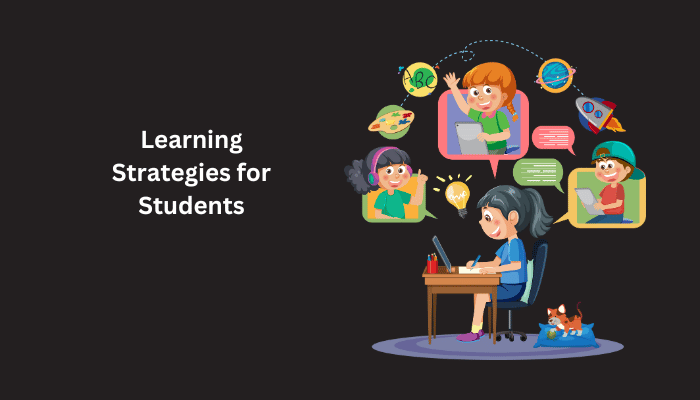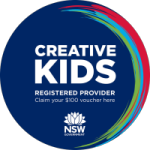Remember the time you tried to memorise the entire periodic table the night before a test? To never remember it during the test… Ah, good times, or NOT. Let's talk about learning the smarter way, to remember things when you need them.
Introduction
In today's fast-paced world, the ability to learn effectively is crucial for both students and professionals alike. Learning how to learn not only enhances academic performance but also fosters continuous improvement and growth in the workplace. In this blog, we'll explore various learning strategies that have proven to be effective in both classroom and workplace settings.
Why is Learning Important?
Learning is not just about acquiring knowledge; it's about developing skills and understanding concepts in a way that enables application and adaptation in various contexts.
For students, mastering effective learning strategies can lead to improved academic performance, better retention of information, and increased confidence in their abilities.
At FunFox we make sure that our students inculcate these learning strategies from a young age for a rewarding journey of diversity and understanding as they grow up.
Similarly, professionals who invest in continuous learning are better equipped to adapt to new challenges, stay relevant in their fields, and advance their careers.
Learning Strategies: An Overview
Learning strategies encompass a wide range of techniques and approaches designed to enhance the learning process. These strategies can be applied in diverse settings, including traditional classrooms, online courses, and professional development programs.
By understanding and utilising these strategies effectively, individuals can optimize their learning experiences and achieve greater success in their educational and professional endeavours.
Now that we've set the stage with why mastering effective learning strategies is a game changer for students and professionals alike, let's dive into what these strategies are all about.
Basic Learning Strategies

Definition and Purpose of Learning Strategies
Learning strategies refer to deliberate, goal-oriented activities that individuals engage in to facilitate learning and improve performance. It also involves the management of resources, comprehension monitoring, and efforts to understand or remember the information being studied as per the model by Weinstein and Mayer (1986).
These strategies are based on research in cognitive psychology and education, which have identified key principles and techniques for effective learning.
What Research Says to Develop Effective Learning Strategies
Decades of research in cognitive psychology and education have provided valuable insights into how people learn and retain information. Psychological research highlights the importance of gradually increasing the difficulty of learning tasks to enhance long-term retention.
However, it's essential to consider the individual pace and needs of the learner, ensuring that the challenges introduced are manageable and conducive to effective learning.
This concept, known as desirable difficulties, as introduced by Robert Bjork, emphasizes striking a balance between challenging the learner and avoiding overwhelming them.
Exploring Strategies for Individual Learning
While certain learning strategies are effective for many individuals, it's important to recognize that everyone learns differently.
Therefore, students and professionals need to explore different strategies and identify those that work best for them individually.
By experimenting with various techniques and approaches, individuals can discover their preferred learning styles and optimize their learning experiences accordingly.
Armed with an understanding of what learning strategies entail, let's zero in on how these power moves can transform your classroom experience.
Effective Learning Strategies in the Classroom
Spaced Practice
Spacing out study sessions over time, rather than cramming all at once, has been shown to enhance long-term retention of information. By revisiting material at intervals, students reinforce their memory and deepen their understanding of the content.
Retrieval Practice
Retrieval practice stands out as a highly effective learning strategy, contrasting starkly with less impactful methods like passive re-reading. While re-reading may give a false sense of familiarity with the material, retrieval practice actively engages memory retrieval pathways, reinforcing long-term retention. Studies by Roediger and Karpicke underscore its effectiveness, demonstrating that actively recalling information, significantly enhances memory recall compared to passive review. By actively engaging with the material through retrieval practice, learners not only strengthen their memory but also develop robust cognitive skills essential for long-term learning success.
Elaboration
This practice involves explaining concepts in your own words and making connections between new information and existing knowledge. By elaborating on ideas and concepts, students can deepen their understanding and retain information more effectively.
Interleaving
This involves mixing different topics or subjects during study sessions, rather than focusing on one topic at a time. This technique encourages students to make connections between related concepts and enhances their ability to apply knowledge in diverse contexts.
Using Real Life Examples
Using concrete examples and real-world applications helps students understand abstract concepts and makes them more relatable. By providing context and relevance, concrete examples enhance comprehension and retention of information.
Dual coding
In this practice, both verbal and visual formats are used to present information, such as diagrams, charts, or illustrations alongside written text. This dual representation helps reinforce memory and improve recall by engaging multiple cognitive processes.
Implementing these strategies can be more effective with the right tools. FunFox in its classes supports learners between ages 6-12 with resources designed to make these strategies more actionable and impactful through their readers and writers' clubs.
There, we've talked the talk about effective strategies in the classroom. How about we walk the walk? Here are some practical examples that students can put into action right away.
Examples of Learning Strategies for Students

Students can employ various practical techniques to enhance their study routines and improve learning outcomes. For instance, utilizing acronyms and mnemonics aids memorization by associating complex information with easily remembered cues.
Engaging in tactile learning through physical activities, such as interactive experiments or hands-on projects, reinforces comprehension and retention. Effective note-taking techniques, like outlining and organizing lecture notes, facilitate better understanding and retention of key concepts.
Practice testing is invaluable for identifying knowledge gaps and reinforcing learning, with students encouraged to seek or create practice tests and analyze results for targeted studies.
Incorporating gamification and active learning methods makes studying more engaging and enjoyable, fostering deeper understanding and retention of material. Additionally, concept mapping visually represents relationships between ideas, aiding in conceptual understanding and facilitating information recall.
By implementing these strategies into their study routines, students can optimize their learning experiences and achieve academic success.
Now that students have their roadmap for success, it's time to pivot to the educators. Here's how teachers can take their lessons from good to great with High Impact Teaching Strategies.
Also Read: 5 Best Learning Activities For Kids
High Impact Teaching Strategies (HITS)
High Impact Teaching Strategies (HITS) are evidence-based practices that have been shown to significantly improve student learning outcomes in both traditional classroom settings and professional development programs. Let's delve deeper into each strategy and explore how they can be effectively implemented:
Teachers and instructors can help their students by helping them set clear learning goals and visualising success. For this, it becomes even more important for instructors to have lessons structured effectively to optimise learning.
Students also benefit from explicit teaching with direct instruction involving systematic and structured delivery of content, typically through teacher-led lessons. This approach emphasizes clear explanations, demonstrations, and modelling of skills or concepts, ensuring that students understand the material thoroughly. In practice, this may involve breaking down complex topics into manageable chunks, providing step-by-step instructions, and actively engaging students through questioning and discussion.
Further clarity can be built by employing solved examples for further understanding. Incorporation of metacognitive strategies such as asking students to submit a reflection on a topic before reading a text and then revisit that reflection after the reading to consider how it informed their thinking to inculcate self-directed learning.
Teachers must recognise that students have diverse learning styles, preferences, and abilities, and aim to tailor instruction to meet their individual needs. One way to implement this strategy is by using assessment tools or technologies that personalise learning experiences for students. For example, teachers can use formative assessments to gauge students' understanding and adjust their instruction accordingly, providing additional support or enrichment activities as needed.
Additionally, incorporating flexible grouping strategies, such as peer tutoring or cooperative learning, allows students to collaborate and learn from one another while addressing their individual learning needs. By differentiating instruction, educators can create inclusive learning environments where all students can thrive and reach their full potential.
By incorporating these high-impact teaching strategies into both classroom settings and professional development programs, educators can enhance the learning experiences of their students and foster continuous growth and improvement. Whether it's through explicit teaching methods or differentiated instruction approaches, the goal remains the same: to empower learners to succeed and excel in their educational and professional endeavours.
The classroom isn't the only place for learning mastery. Let's take a journey into the workplace and see how these strategies can be a game changer in a professional setting.
Combining and Adapting Strategies
In education and professional development, merging and customizing learning methods can yield impressive results.
By combining strategies like spaced practice and retrieval practice in classrooms, students reinforce memory and deepen understanding.
Before we wrap up, let's take a moment to reflect on our learning journey and look ahead.
Conclusion
Recapping our journey through learning strategies, it's evident that their importance extends far beyond the classroom. These strategies serve as the cornerstone of effective education and professional development, empowering individuals to achieve their full potential.
In both educational and professional settings, the adoption of these strategies fuels continuous growth and improvement.
As we reflect on the importance of diverse learning strategies, consider how FunFox can support your kids' journey towards more effective learning and development, with tools and resources designed for their long-term journey of learning.
By embracing a culture of exploration and adaptation, learners can navigate the complexities of modern learning environments with confidence.
As we conclude, let's remember that learning is a lifelong journey—a journey enriched by the diversity of strategies at our disposal. So, let's continue to explore, experiment, and refine our approaches, ensuring that each step forward brings us closer to our goals.
Here's to the pursuit of knowledge, the evolution of skills, and the endless possibilities that lie ahead. Happy learning!





















